The Little Sparrowhawk, scientifically known as Accipiter minullus, is a diminutive but formidable bird of prey belonging to the Accipitridae family.
This compact raptor is widely distributed across sub-Saharan Africa, showcasing remarkable adaptability to various habitats, including woodlands, savannas, and forested areas.
Distinguished by its sleek appearance and agile flight, the Little Sparrowhawk is a masterful hunter, preying primarily on small birds and insects.
With a wingspan ranging from 50 to 67 centimeters, and females generally larger than males, these birds exhibit sexual dimorphism. Their cryptic plumage aids in stealthy hunting, while keen eyesight and sharp talons make them efficient predators.
Despite their small size, Little Sparrowhawks play a crucial role in maintaining ecological balance, contributing to the intricate tapestry of biodiversity within their native ecosystems.
Understanding the behavior and characteristics of these avian predators provides valuable insights into the intricate dynamics of avian ecology.
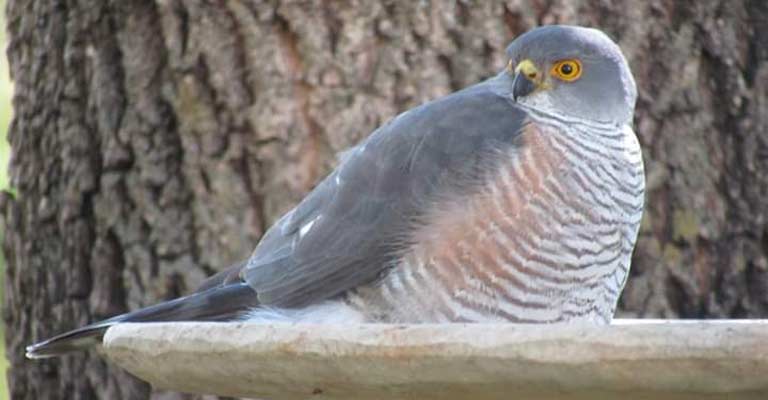
Identifying Characteristics of Little Sparrowhawk
Identifying the Little Sparrowhawk (Accipiter minullus) requires a keen eye and a nuanced understanding of its distinctive characteristics. Despite its diminutive size, this raptor possesses unique features that set it apart from other birds of prey.
Here are eight key points to help enthusiasts and birdwatchers accurately identify the Little Sparrowhawk in the wild.
Size and Proportions
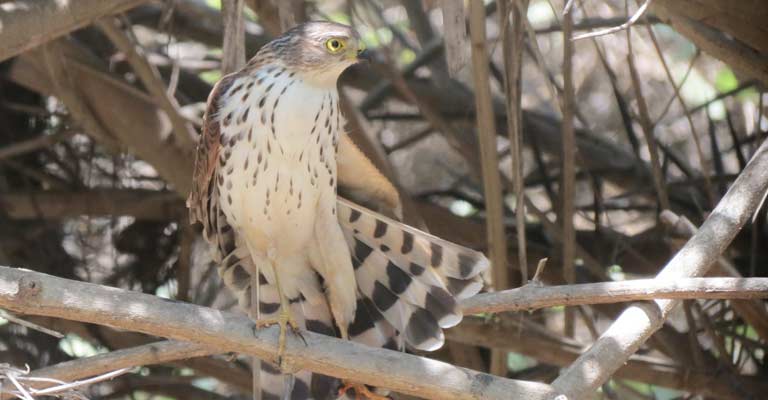
The Little Sparrowhawk is notably compact, with a body length ranging from 23 to 29 centimeters. Females are generally larger than males, showcasing a subtle sexual dimorphism.
Pay attention to the bird’s overall proportions, featuring a relatively short tail and rounded wings, which contribute to its agile and swift flight.
Plumage and Coloration
The plumage of the Little Sparrowhawk is characterized by a combination of dark and light markings. Adults typically exhibit a bluish-gray to slate-gray upper body, complemented by a white underbelly adorned with fine, dark streaks.
Juveniles may display a browner hue with more pronounced streaking. Additionally, their eyes stand out with a distinct red or orange coloration.
Facial Features
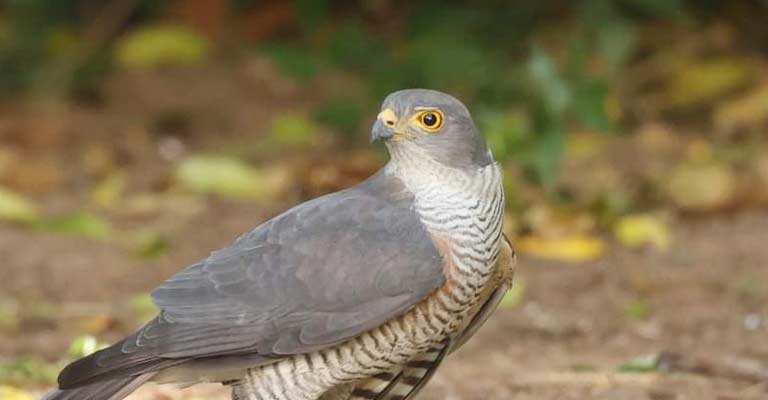
Focus on the facial characteristics, notably the distinct “hood” or dark cap on the head that contrasts with the paler face. This facial pattern gives the bird an intense and focused appearance.
The cere, or the fleshy part surrounding the bill, is yellow, further aiding in identification.
Wings and Tail
Examining the wings and tail is crucial for accurate identification. The wings are relatively short and rounded, contributing to the bird’s maneuverability during flight.
The tail is square-tipped, contrasting with the longer, more pointed tails of some other raptor species.
Flight Behavior
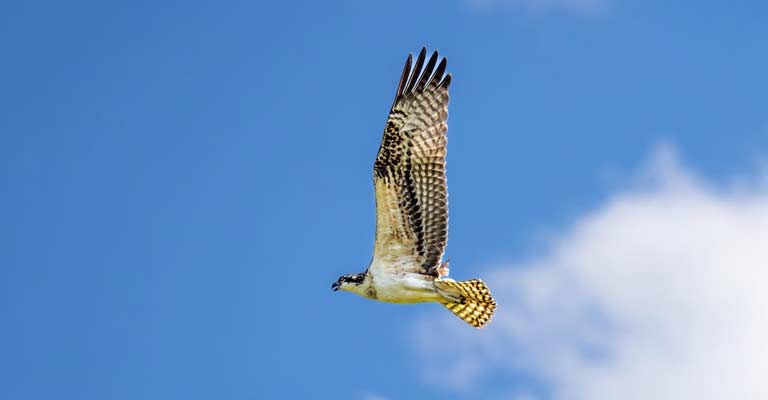
Observe the Little Sparrowhawk in flight to note its distinctive flight behavior. These birds are agile and adept at navigating through dense vegetation in pursuit of prey.
Their flight is characterized by rapid wing beats and sudden changes in direction, reflecting their hunting strategy of ambushing small birds in the air.
Habitat Preferences
Little Sparrowhawks are adaptable birds, but they tend to favor wooded and forested habitats, including savannas and woodland edges. Understanding their preferred habitats can assist in narrowing down potential sightings.
Call and Vocalizations
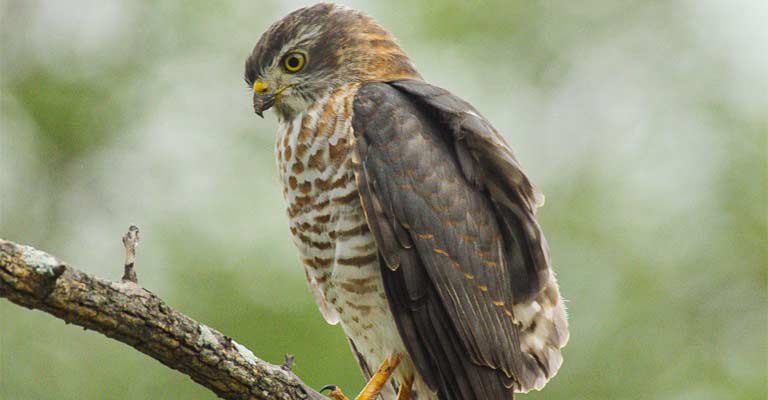
Familiarize yourself with the bird’s vocalizations, which can aid in identification. Little Sparrowhawks produce a series of high-pitched, sharp calls, often heard during courtship or when defending territory.
These calls are distinct from the vocalizations of other raptors in their range.
Behavioral Traits
Pay attention to their hunting behavior. Little Sparrowhawks are skilled ambush predators, often perching inconspicuously before launching surprise attacks on unsuspecting prey. Observing their hunting tactics can provide valuable insights for identification.
Identifying the Little Sparrowhawk involves a holistic approach, considering a combination of physical characteristics, plumage details, behavior, and habitat preferences.
By honing in on these key points, bird enthusiasts can enhance their ability to distinguish this remarkable raptor in its natural environment.
Taxonomy of Little Sparrowhawk
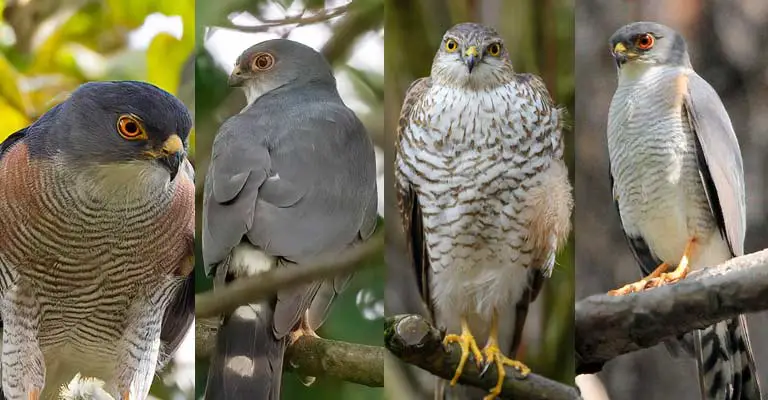
This table outlines the hierarchical classification of the Little Sparrowhawk, starting from the broad domain level down to the specific species level.
| Taxonomic Level | Classification |
| Domain | Eukaryota |
| Kingdom | Animalia |
| Phylum | Chordata |
| Class | Aves |
| Order | Accipitriformes |
| Family | Accipitridae |
| Genus | Accipiter |
| Species | A. minullus |
The Little Sparrowhawk (Accipiter minullus) belongs to the Animalia kingdom, Chordata phylum, and Aves class.
It is classified under the order Accipitriformes and the family Accipitridae. Within the Accipitridae family, it falls under the genus Accipiter, and its specific species designation is A. minullus.
This taxonomy places the Little Sparrowhawk among the diverse array of birds of prey, showcasing its evolutionary relationships and biological classification within the broader context of the animal kingdom.
Little Sparrowhawk Life History
The life history of the Little Sparrowhawk (Accipiter minullus) unveils a captivating narrative of a compact yet formidable raptor.
From its feeding habits to breeding behaviors and conservation challenges, each aspect contributes to the intricate tapestry of this avian species.
Food
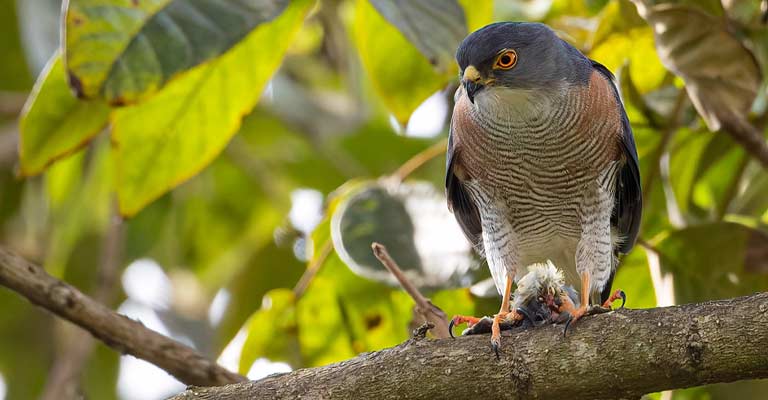
Little Sparrowhawks are agile hunters with a diet primarily composed of small birds, insects, and occasionally small mammals.
Their hunting strategy involves stealthy ambushes, relying on rapid flight and sharp talons to capture prey mid-air.
Habitat
Adaptable in nature, these birds thrive in diverse habitats, including woodlands, savannas, and forested areas. Their preference for areas with ample cover aligns with their hunting style, utilizing vegetation for concealment.
Range Map
The Little Sparrowhawk boasts a wide distribution across sub-Saharan Africa. Its range map encompasses various countries, showcasing adaptability to different ecosystems within the continent.
Breeding
Breeding occurs during the dry season, marked by elaborate courtship displays. Mates work collaboratively in nest-building, often concealed within thick foliage.
Clutches typically consist of 2-4 eggs and both parents share incubation and feeding responsibilities.
Diseases
While Little Sparrowhawks face various diseases, Avian Pox and Trichomoniasis are notable concerns. These ailments can impact the bird’s overall health and reproductive success.
Treatment
Addressing diseases involves a multifaceted approach. Avian healthcare professionals may administer antibiotics, antifungals, or supportive care to combat infections.
Prevention through habitat preservation and monitoring is also crucial.
Conservation
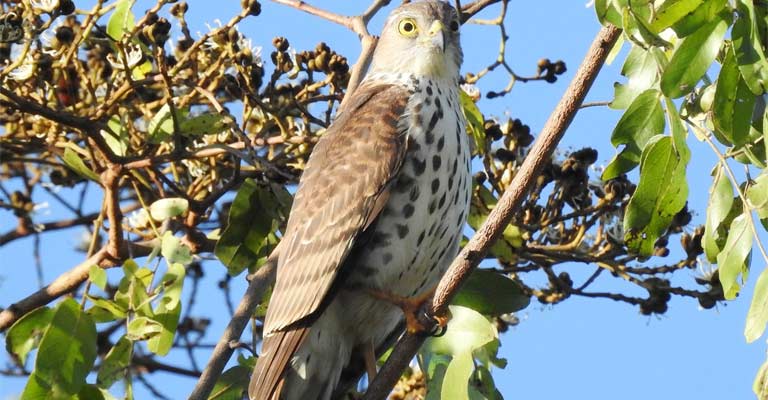
The Little Sparrowhawk faces conservation challenges due to habitat loss and potential pesticide exposure.
Conservation efforts involve habitat preservation, research, and public awareness to mitigate threats and ensure the long-term survival of this vital species.
In essence, the life history of the Little Sparrowhawk underscores the interconnectedness of its ecological role, emphasizing the need for comprehensive conservation strategies to safeguard its existence in the diverse landscapes it calls home.
Nesting Habits of Little Sparrowhawk
The nesting habits of the Little Sparrowhawk (Accipiter minullus) reflect a meticulous and collaborative approach to reproduction.
Typically concealed within the dense foliage of trees or shrubs, the nest is a carefully constructed structure made of sticks and twigs, lined with finer materials.
Incubation, shared between both males and females, lasts around 28-30 days, followed by a nestling period of 28-32 days. The eggs themselves are usually pale blue or greenish-white with distinct darker markings.
These nesting habits showcase the adaptability of Little Sparrowhawks in utilizing concealed locations and their commitment to collaborative parenting, contributing to the successful continuation of their species.
Here’s a table summarizing the nesting details of the Little Sparrowhawk (Accipiter minullus):
| Nesting Details | Facts |
| Clutch Size | 2-4 eggs |
| Number of Broods | Typically one, occasionally two |
| Egg Length | Approximately 35-40 mm |
| Egg Width | Around 28-32 mm |
| Incubation Period | Approximately 28-30 days |
| Nestling Period | About 28-32 days |
| Egg Description | Generally pale blue or greenish-white with darker markings. |
| Nest Location | Concealed in thick foliage within trees or shrubs. |
| Nest Construction | Built collaboratively by the mating pair, using sticks and twigs, lined with finer materials. |
| Parental Involvement | Both males and females share incubation and feeding responsibilities. |
| Fledgling Independence | Young birds become independent after leaving the nest, continuing to be cared for by parents for some time. |
10 Fun Facts About Little Sparrowhawk
The Little Sparrowhawk (Accipiter minullus) may be small in stature, but it harbors a fascinating array of characteristics that captivate bird enthusiasts. Here are 10 fun facts that shed light on the intriguing nature of this diminutive raptor.
- Size and Stealth: Despite its small size, the Little Sparrowhawk is a master of stealth. With a body length ranging from 23 to 29 centimeters, it navigates its surroundings with incredible agility, making it a formidable hunter.
- Mimicry Mastery: Little Sparrowhawks are known for their remarkable ability to mimic the calls of other bird species. This skill enhances their hunting prowess, allowing them to deceive potential prey.
- Dietary Preferences: Specializing in avian cuisine, these raptors primarily feed on small birds and insects. Their hunting strategy involves surprise attacks, showcasing their prowess in mid-air maneuvers.
- Distinctive Plumage: The plumage of Little Sparrowhawks is both subtle and distinctive. Adults exhibit a bluish-gray to slate-gray upper body, blending seamlessly with their woodland habitats and providing effective camouflage during hunts.
- Gender Dimorphism: Sexual dimorphism is evident, with females generally larger than males. This size difference is a noteworthy feature, emphasizing the varied roles each gender plays in the reproductive process.
- Nest Building Duo: Little Sparrowhawks engage in collaborative nest-building endeavors. Mating pairs work together to construct nests using sticks and twigs, showcasing a shared commitment to raising their offspring.
- Territorial Calls: These birds are vocal in defending their territories. Their high-pitched calls serve not only for territorial assertion but also play a role in courtship displays.
- Adaptable Habitat Range: Little Sparrowhawks display adaptability by thriving in various habitats, including woodlands, savannas, and forested areas. This flexibility contributes to their widespread distribution across sub-Saharan Africa.
- Swift Reproduction: Breeding during the dry season, Little Sparrowhawks ensure swift reproduction. Clutches of 2-4 eggs are incubated jointly by both parents, reflecting their cooperative approach to family life.
- Conservation Concerns: While resilient, Little Sparrowhawks face habitat loss and potential pesticide exposure, prompting conservation efforts to preserve their vital role in maintaining ecological balance.
These 10 fun facts illuminate the unique attributes and behaviors of the Little Sparrowhawk, underscoring the richness of this avian species in the intricate tapestry of the natural world.
Wrapping Up
The distinct features of Little Sparrowhawk such as its bluish-gray plumage, vocal territorial assertions, and collaborative nest-building efforts, add layers to its identity, emphasizing the role it plays in maintaining ecological balance.
However, the narrative of the Little Sparrowhawk also echoes a note of concern. Conservation challenges, including habitat loss and potential pesticide exposure, underscore the delicate balance between human activities and the preservation of biodiversity.
Recognizing the importance of these raptors within the ecosystem prompts a call to action, and a collective responsibility to safeguard their habitats and ensure a harmonious coexistence.
As we delve into the world of the Little Sparrowhawk, it serves as a poignant reminder of the interconnectedness of all living beings and the shared responsibility we bear in preserving the beauty and diversity of our natural world.